Its here. Finally. No more vague hints or rumored release dates…or even a reveal event. The Nexus 5 arrives in an understated way, dressed in an understated package.
Its a Sleeper
First impressions are everything, and the one left on me by Google’s latest flagship was one of surprise. Here we have a 5″ device that much like other smart phones in this size range, is expected to have considerable heft, yet actually felt lighter in the hands than smaller competing devices (which makes sense considering its only weighing in at 130g). Off to a good start I’d say.
Google is offering up the Nexus 5 in two flavors, each with two different storage configurations. A black colored model that’s made with rubber plastic backing (similar to the same material found on a Nexus 7), and an Oreo or Panda colored model that sports a harder touched white backing with a black bezel and gloss trim. Both are available in 16GB and 32GB configurations. This review is based on the white 16GB model.
I must say, both models sport a design that’s not immediately eye grabbing, though the black camera lense and white earpiece on the white model does help to stand it out somewhat. The lack of carrier branding and the understated Nexus Logo etched into the back make this a very clean, all business, understated design. It works for me personally, and the lack of gloss on the back helps to keep finger prints to a minimum; always a good thing. In addition, the soft rubber plastic of the black model and matte finish of the white makes it very easy to hold without the fear of it slipping from your hands.
Of course, nothing is perfect, and as great as the physical design is, there are a couple of choices that I wish were handled a little differently.
First is the dual-grill speaker system placed at the very end of the phone.
I’m wording my description carefully here, since at first glance, you’d be under the impression that this was a full stereo setup similar to the Nexus 7 and HTC One, but that sadly isn’t the case.
The left side grill houses the often-too-quiet speaker on the device, while the right side is where you’ll find the very high quality microphone (more on that in the camera section).
I would have much preferred a stereo setup even if it meant rear facing grills, and coming from an HTC One and Nexus 7 (to devices that knock it out of the park with sound quality), it can be a bit difficult to adjust to the tiny sounding driver found here. Here’s to hoping Google can provide at least a volume boost in the future without overdriving the sound.
The second issue I have with the physical design of the Nexus 5, is actually more of a nitpick. The power button and volume rocker are placed a little to high up considering the size of the phone, which leads me to doing the smartphone shuffle in my hands when needing to access these buttons.
Again, not a major deal, but certainly would have gone a ways towards increasing comfort; especially for one-handed use.
Display
The Nexus 5 sports a 4.9″ 1080p IPS display with a PPI of 445, so as you can imagine, text appears like it would on paper and images are very life like. There’s also very little gap from the screen to the glass which gives the illusion of objects floating just above the actual display. Truly a sight to behold. Still, there is room for improvement, however small. Color saturation is a little subdued and viewing angles aren’t the greatest, but thankfully at least the former can be eventually be fixed via a future software update. Overall, you’ll find yourself “ooing” and “aahing” more often than not; this is definitely the greatest looking display of any Nexus device, tablet or otherwise. Its also a very well protected one to boot thanks to Corning’s Gorilla Glass 3 process.
Performance
Much like the Nexus 4 before it, this year’s iteration sports top of the line processing hardware; this time in the form of Qualcomm’s Snapdragon S800 soc featuring a 2.3ghz quad core CPU and 450mhz Andreno 330. all of it topped off with a generous 2GB RAM.
Number numbers numbers; they sound nice, but what do they mean for the end user? Well, in short, it means the phone never gets in the way of you getting what you need done, as fast as you need it. Scrolling through homescreens, menus or Chrome is a pleasant experience devoid of lag or stutters. Applications nearly launch instantly, and perform amazingly well once started. Multitasking too, is handled so effortlessly by the hardware, allowing for a switch between apps almost as fast as you can touch the screen!
In fact, when you take into account that system requirements for this latest version of Android (shipping with this phone) have been significantly reduced, you could say the Nexus 5 hardware is overkill. That said, it also means you have a much more future proofed phone for when the time comes that software begins to really leverage the internal silicon. In a market where one isn’t usually expecting to keep their phone for more than a year, it certainly shakes things up a little. More than likely the case will be, you’ll want to change phones just to have something new, rather than due to any inability of the Nexus 5 to keep up with increasing software demands. In the end, it just makes this value packed smartphone, that much more valuable.
Camera
With each passing year, expectations for a truly great camera on our mobile devices have increased exponentially. Phones like the iPhone 5, Note 3, and Nokia 1020 have proven that taking pictures with our smart phones doesn’t have to mean a major compromise in quality. Unfortunately this hasn’t been the case with the Nexus line of phones, and while the 8MP OIS capable sensor in the N5 is certainly a marked improvement over its predecessor, it still falls short some glaring ways.
Chief among them is the camera’s difficulty in locking into focus. More often than not, when trying to capture a singular subject, I would have to repeatedly tap the screen until the camera locked onto the foreground rather than the background. Even when you’re given the green symbol indicator, the results aren’t always exactly what you’d expect.
Scene detail is also especially lacking for full resolution landscape shots; and far objects rife with fine detail can look fairly muddy, and soft as a result. I also noticed that this issue was exacerbated with the enabling of HDR+, though color accuracy usually improved.
The above may sound very negative, but rest assured its not all gloom and doom.
Thankfully, I never experienced the issues mentioned when taking closer macro shots. In fact, the shots this camera produced in that mode were some of the best of any smartphone on the market!
The panorama and photosphere modes too, were equally as impressive. Usually I can spot stitching errors in both modes on other smart phones, but the Nexus 5 camera pulled the corresponding shots off with nearly no errors at all.
Another strength, is the camera’s ability to take fairly decent low light shots with minimal noise. Something both the HTC One and Lumia 1020 have been praised for; the Nexus 5 holds its own remarkably well here. In fact, there were many scenarios in which it was able to outperform the former device. Not bad for a $350 off-contract smart phone!
Video recordings (in your choice of either 1080p, 720p or 480p resolutions) benefit in the same way as still captures do. Thanks to OIS, operators with less than steady hands should have no issue capturing a moment that results in a clear, shake-free video. Also, as mentioned at the start of this review, the microphone does an exceptional job of recording crisp, clean audio (you just won’t appreciate that audio using the built-in speaker however).
Overall, I think if you’re patient enough to work through the quirks to capture the shot or video you want, you’ll find that the Nexus 5 is more than serviceable; no longer does having a Nexus mean having a terrible camera. Also, I think its important to mention that at least one of the two major issues can probably be solved by a software update (decouple that camera software Google!), so things will only improve.
Battery life
Fast performance, updated software, a gorgeous display and an improved camera make for device that’s hard to out down; so battery life is of utmost importance. After all, what good is it all if the phone doesn’t last long enough for you to enjoy it.
And much like the camera, this has been an Achilles heel of the nexus line of smartphones. Unfortunately however, unlike that category, the improvement in this new iteration isn’t as great as one would like it to be.
Powering the whole package is a modest 2300 mah lithium battery. In and of itself, that’s not a bad size for a typical smartphone, but the typical smartphone isn’t a 4.9″ 1080p high end number cruncher either. What this means is that with modest use and lower brightness levels, expect maybe 12-14 hrs with 4.5 of those hours having the screen on. This was enough to only just get me though my work day, but reaching for a charger the moment I walked into my home. Sure, you can disable some of the location based features of system applications like Google Now for instance and eek an extra half hour or so, but it goes without saying, don’t expect Note 3 or G2 level battery life regardless what you do; there’s no software substitute for having a larger capacity battery.
Still, as touched upon earlier, it can be wirelessly charged. So at the very least, topping off some juice when not being used, can be done conveniently; hopefully softening the blow of having a small-ish battery. Expect too, further optimizations to the OS that will help keep battery drain to an absolute minimum.
Software
It wouldn’t be a Nexus device if it wasn’t shipping with an updated version of Android, and the Nexus 5 is no different. This time we have a full point release that brings us to 4.4 (codenamed Kit Kat by Google), and just like the phone itself, isn’t an eye catching change but rather features updates and improvements that make this the cleanest and best performing version of Android yet.
Starting with the launcher itself, you may notice that the software buttons and notification bar feature transparent backgrounds, giving you a better view of your wallpaper and opening up the size of the display on your home screens.
Controversially, this transparency also extends into the app drawer as well, causing the background to become opaque when opened. Some may like the ability to see their wallpaper when browsing through their apps, and while it definitely makes the transition to the drawer smoother, it can also make things a little too busy depending on the wallpaper being used.
Spend some time in the drawer, and you may notice more than just the transparency here; gone are the separate tabs for your widgets and apps.
Its here where Android has actually gone back to doing things they way it used to; a long press will give you options for adding widgets, changing wallpaper, and accessing settings. Personally, I had no issue doing it like this back on gingerbread, but I have grown accustomed to the tabs. Basically I’m fine either way, and only find the switch in how its all performed, more confusing than anything else.
Playing a bigger role in the experience is Google Now, which has been integrated into the main launcher so as to be accessible in two new ways; either swipe right from the main home screen or simply say, “Ok Google” from the same starting point. Once launched, the application performs the way you’ve come to expect. All your enabled notification cards slide into view, and the same voice command mentioned above, can be used to activate the open microphone to perform a search or action.
Additionally, the dialer is now somewhat tied into the Goggle search engine as well. Now present at the very top of the application is a search box that not only works to find your local contacts, but will also attempt to pull phone numbers and names for commercial establishments as well. Typing Best Buy for instance, pulled up all the nearest locations in a scrollable list along with their corresponding phone numbers, though I could not find an example that also provided a stock logo for a contact image. Even still, this makes it a lot easier for someone like myself to get in contact with multiple locations quickly, which comes especially in handy in trying to find out when the next shipment of PlayStation 4s will be available (note to self: ALWAYS pre-order).
Another application that sees a major upgrade to functionality with the move to 4.4, is Google Wallet. Of course, its no secret the uphill battle Google faced in trying to make standard, their NFC powered payment solution. Much of the issue stemming from the secure element hardware requirement that didn’t sit well with cellular phone carriers (who in addition, want to push ISIS as the standard anyway). So most wallet users were left with an application that was more a competitor to PayPal’s app, than it was an option for physical payment.
Thankfully, Google found a way to keep those NFC chips on our smart phones relevant by simply removing the hardware requirement of the secure element and virtualizing it via emulation. What this means is, so long as you’re on the latest and greatest version of Android and sport an NFC chip, you can take advantage of the secure element emulation and use your phone (or tablet) to perform swipe (or tap) to pay transactions. Of course, the few devices with an actual secure element such as the Galaxy Nexus, can continue business as usual.
New to Android 4.4 is the ability to take for instance, a digital receipt from a transaction using wallet, and print to any compliant Wi-Fi or even cloud based printer! Of course, it isn’t limited to just receipts, but rather nearly any type of image or document that can be viewed on your smartphone as well. This is a rather crucial stepping stone towards further legitimizing Android as a productivity platform as well as an Ingress one.
Speaking of productivity, its fair to say that the importance of a logical, easy to use file system can never be overstated. Google certainly believes so, and have finally provided a much more intuitive, context sensitive file selection system. As an example, when you attach a file in Gmail, the file selection app is opened (where as previously, you would get a window with app icons) and you’re presented with valid file choices that are available on local storage. Pulling the slide out menu from the left, you can choose to use files available from other sources, such as Google Drive or Box. The whole process is handled much better than before, and makes it a much more cohesive experience.
Worth the upgrade?
In the time I’ve had the Nexus 5 (over a week as of this post), I’ve come to realize the truth in the old adage, “The grass is always greener on the other side”. And as great a Google experience the Nexus 5 has been so far, I probably could have gotten along just fine with my HTC One (or even the Note 2 before that). Perhaps that’s more a fault of diminishing returns considering the software these smart phones are running, or maybe its harder to make a bad smartphone in general nowadays.
Regardless, the Nexus 5 is now my primary mobile device, and does nearly everything I need it to better than my past devices (even if its only a little better); so in that regard, I couldn’t be happier.
The affordable price point is a fantastic low barrier of entry to the high end smart phone world, and gives many people (sorry, Verizon customers) the opportunity to remove the shackles of a contract and move to a product line that will receive great software support for two years, all the while never feeling obsolete in the face of newer competing device releases in that time frame. You’re also going to be at the cutting edge of the android experience as Google would see it; and if Jellybean was any indication, you’re only going to see Kit Kat perform and function even better as time moves on.
If the Google experience is of highest priority when determining which smart phone to buy, you can’t find a better one than the Nexus 5. No other nexus product currently encompasses Google’s vision for its platform as well as this one. Couple that with a much faster SoC, improved camera, moderately improved battery life and a drop-dead gorgeous display, the Nexus 5 purchase is a no-brainer.
Just good-luck finding one in stock…
Click any image below to see full resolution Nexus 5 camera shots (note: Camera shots used above in this review, were taken with a Galaxy Nexus):





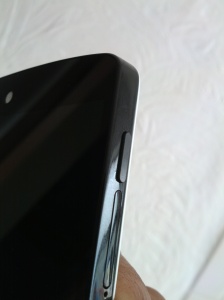
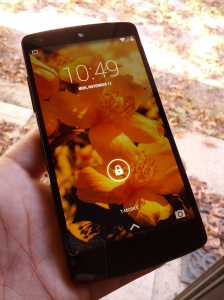





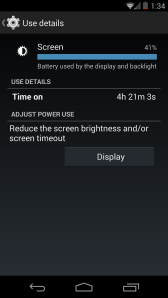
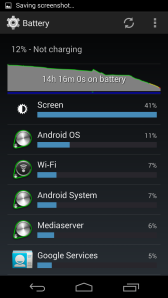
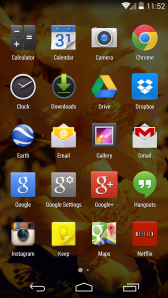
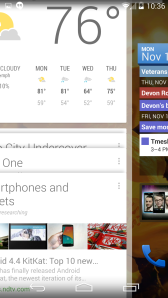

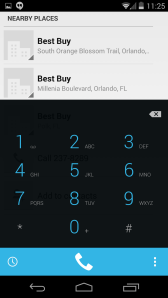

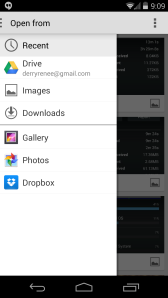









Hey I know this is off topic but I was wondering if you knew of any widgets I could
add to my blog that automatically tweet my newest twitter updates.
I’ve been looking for a plug-in like this for quite some time and
was hoping maybe you would have some experience with something like this.
Please let me know if you run into anything. I truly enjoy reading your blog and I look forward to your new updates.
Simply desire to say your article is as amazing.
The clarity for youyr publish is just spectacular and i can assume youu are an expert iin this subject.
Well together with your permission allow me to snnatch your RSS feed to stay updated with impending post.
Thanks 1,000,000 and please keep up the gratifying work.